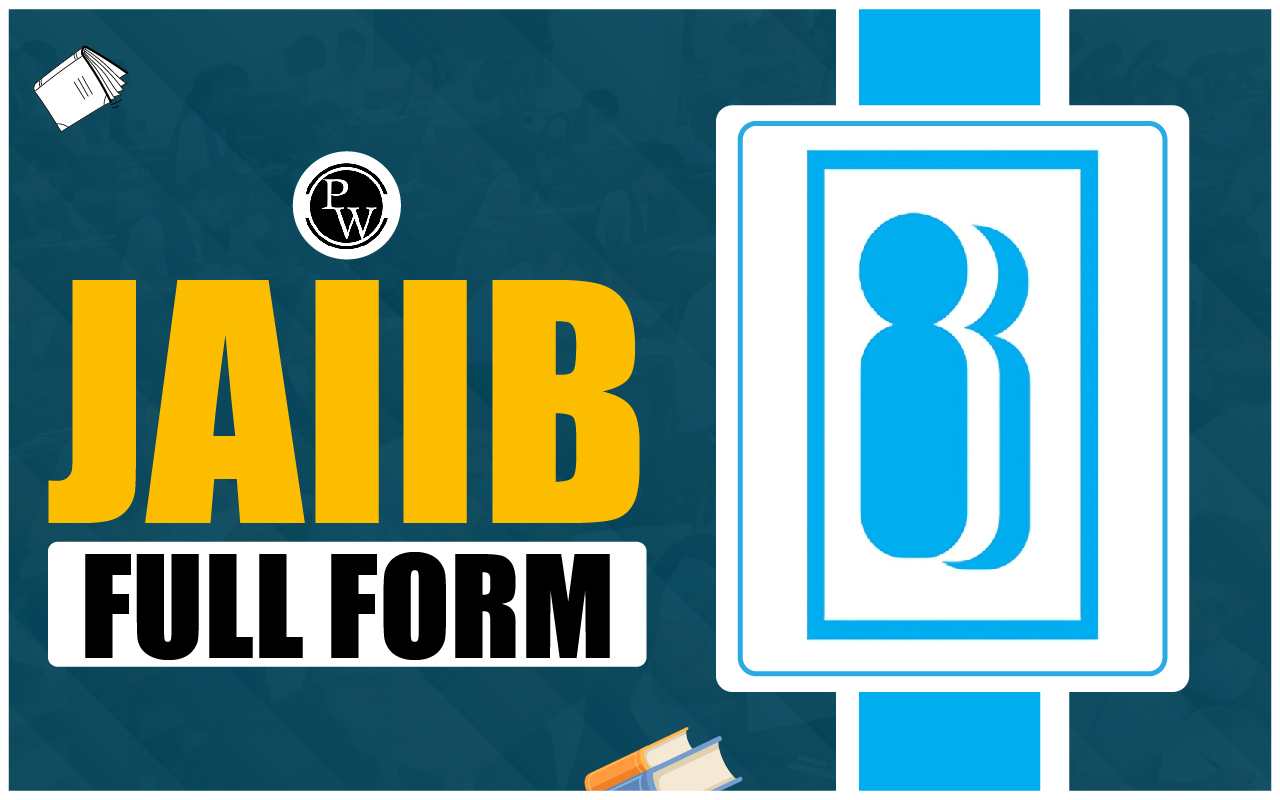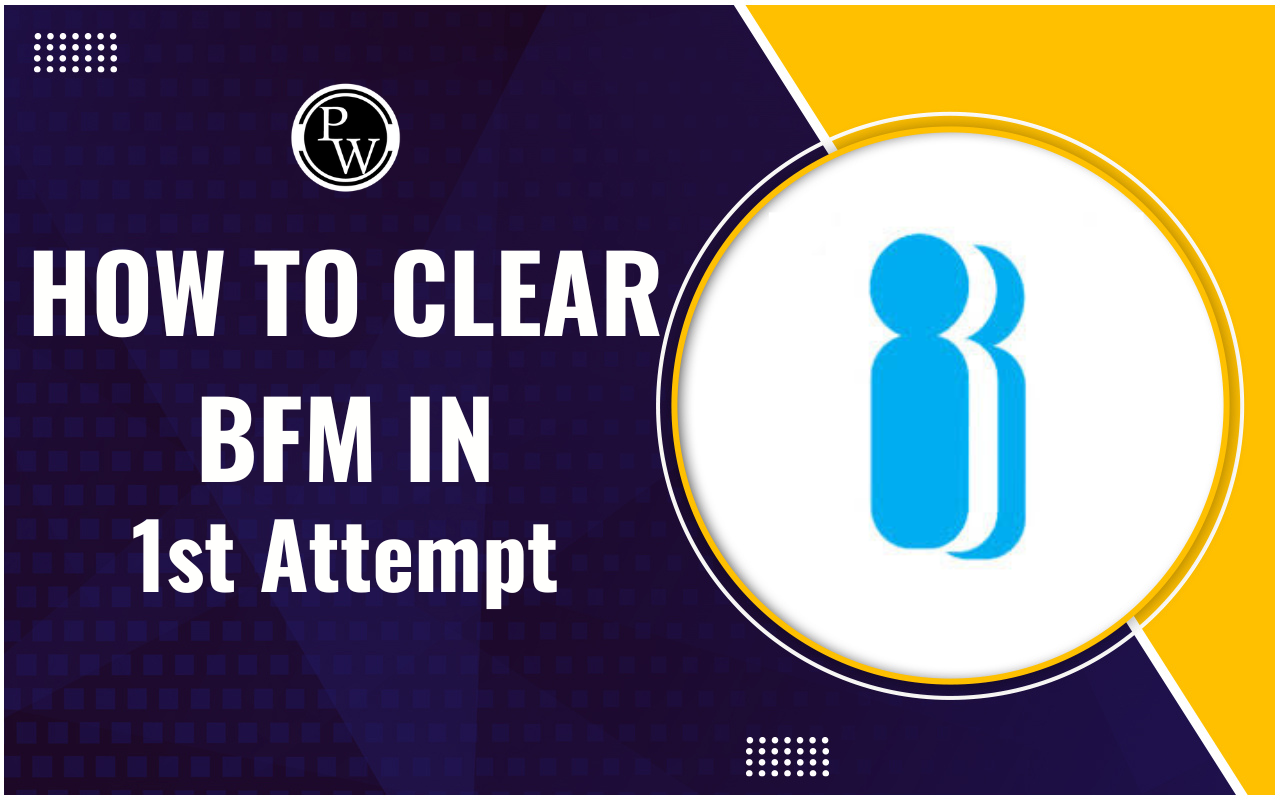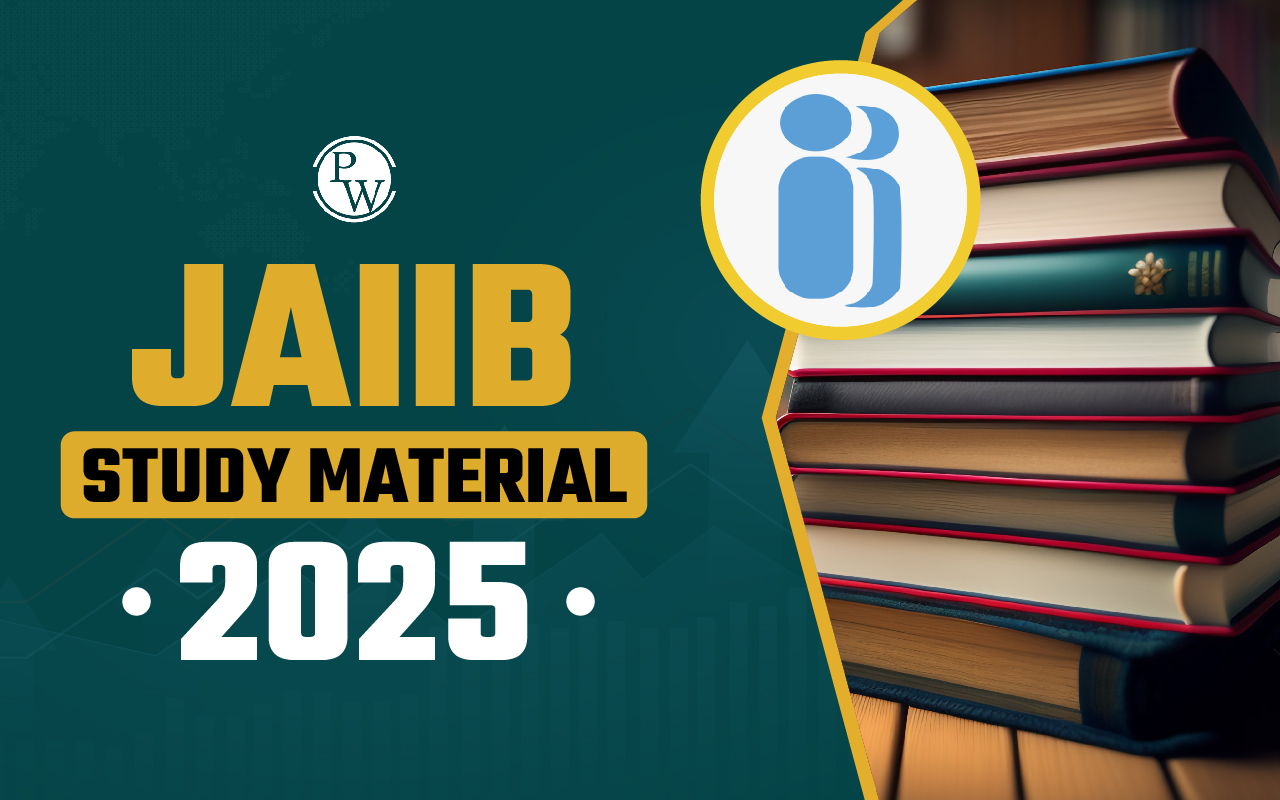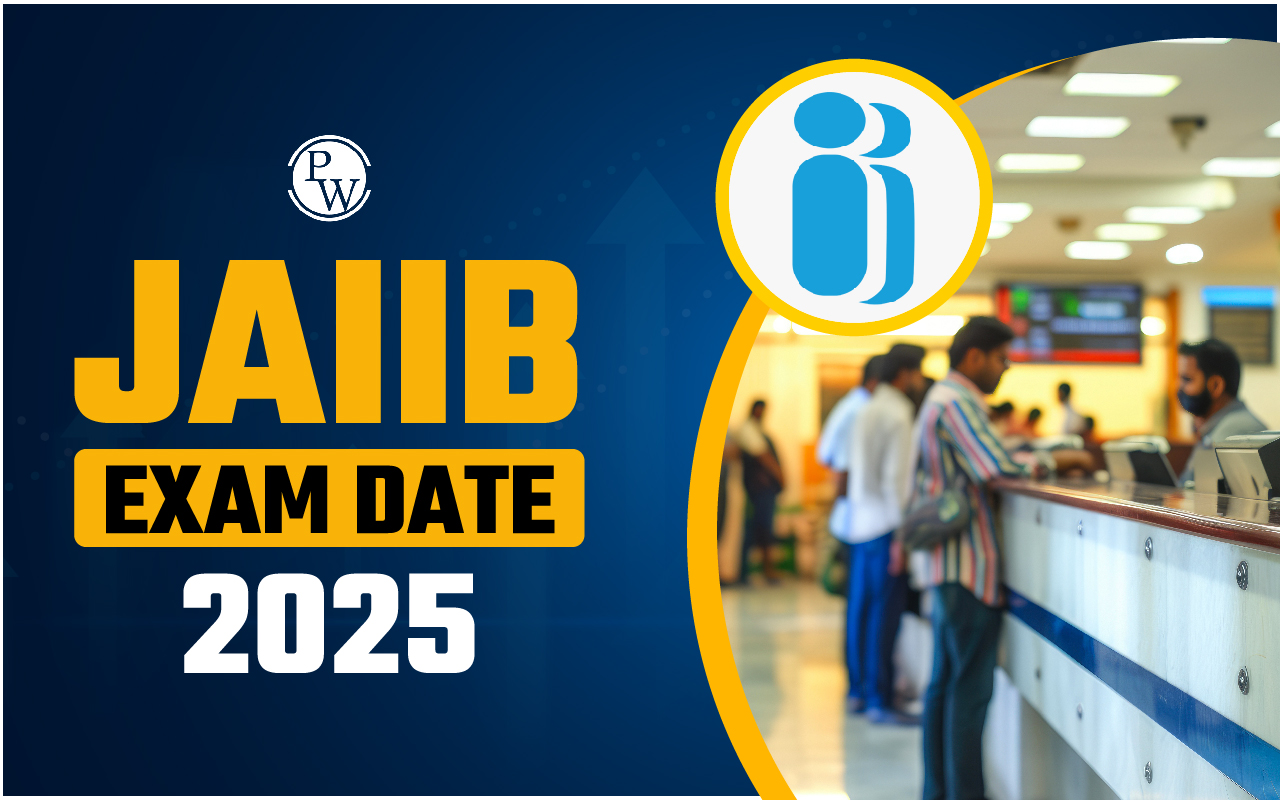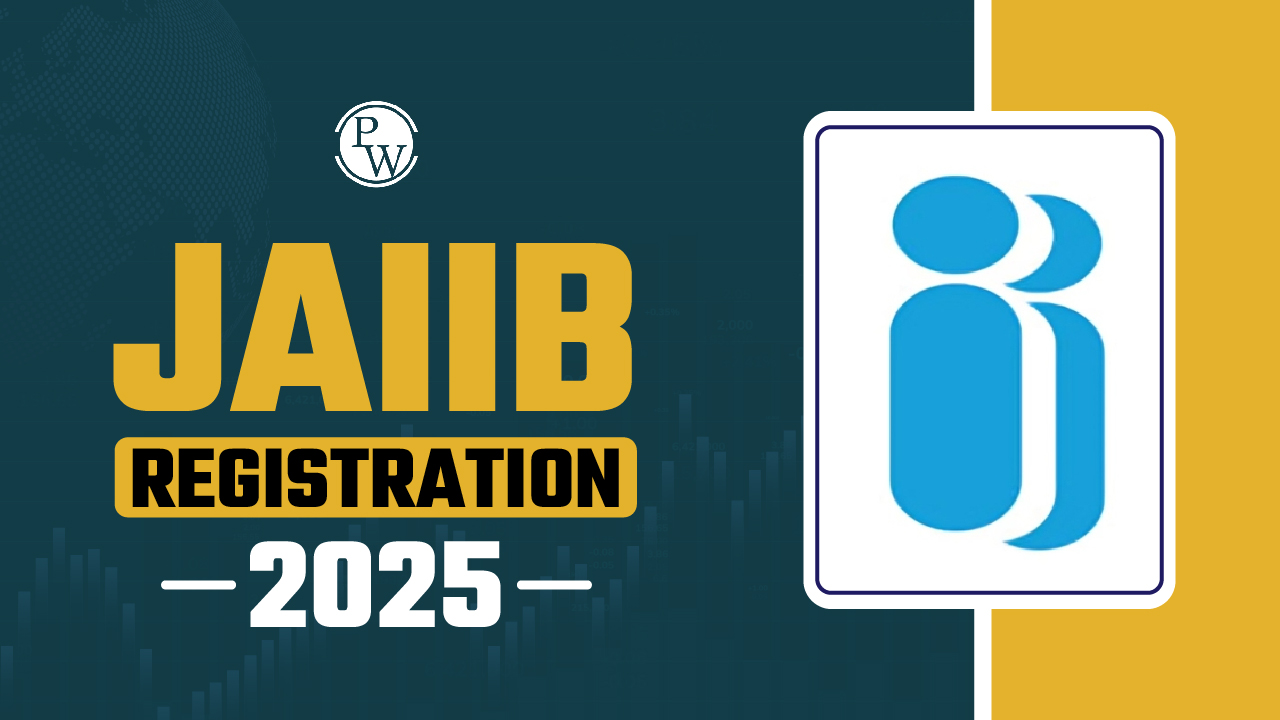

JAIIB IE and IFS Preparation Tips 2025: The JAIIB IE and IFS is the most challenging examination of all the JAIIB Papers. The banker who wishes to excel in his career recognizes the advantages of succeeding in the JAIIB 2025 exam. To assist JAIIB candidates in successfully navigating the JAIIB May 2025 Exams, we have formulated a study plan to clear the JAIIB IE and IFS Exam 2025.
For the JAIIB May Cycle, the JAIIB IE and IFS Exam 2025 is scheduled for 4th May 2025 and it is high time banking professionals should gear up to start their preparation with dedication and full attention.JAIIB Exam Date 2025 Out- Click to Check
JAIIB IE & IFS Preparation Tips 2025
Upon completing this article, you will gain insight into how to successfully clear the JAIIB 2025 Indian Economy and Indian Financial System (IE and IFS) Exam 2025 with this specific organization. This article has been specifically crafted to offer potential JAIIB candidates the key topics that appeared in the previous Junior Associate of the Indian Institute of Banker's IBF exam and the mark distribution achieved by the examinee. Learn the JAIIB IE and IFS Preparation Tips 2025.JAIIB IE & IFS Study Plan 2025
Before starting the JAIIB IE and IFS Preparation, it is important to understand the entire syllabus of the JAIIB IE and IFS exam. According to the detailed syllabus provided on the IIBF official website the JAIIB IE & IFS Paper consists of four modules, these are:- Module A: Indian Economic Architecture
- Module B: Economic Concepts Related To Banking
- Module C: Indian Financial Architecture
- Module D: Financial Products And Services
Module A Indian Economic Architecture
| Module A: Indian Economic Architecture | ||
| SNo. | Chapters | Topics |
| 1 | An Overview of the Indian Economy | Basic Characteristics of Indian Economy – World Bank Classification Economy till 2008 & after 2008 – Hindu Rate & Growth |
| 2 | Sectors of the Indian Economy | Role & Importance of Primary, Secondary & Tertiary Sector Sunrise Sector of Indian Economy |
| 3 | Economic Planning in India and NITI Aayog | Five Years Plans in India NITI Aayog – Strategy for New India @ 75 |
| 4 | Role of Priority Sector and MSME in the Indian Economy | List of Priority Sectors Identified in India & PSL Targets |
| 5 | Infrastructure, including Social Infrastructure | Energy Power, Transport system viz., Rail, Road, Civil Aviation – Initiative given |
| 6 | Economic Reforms | Economic Transformation – Financial Sector – Narasimham Committee |
| 7 | Foreign Trade Policy, Foreign Investments, and Economic Development | FDIs, FIIS, and Recent Trends |
| 8 | Climate Change, Sustainable Development Goals (SDGs) | India’s progress in SDGs, including Climate change, CSR Activities – Initiatives, CoP 26, CSR |
Module B Economic Concept Related to Banking
| Module B: Economic Concepts Related to Banking | ||
| SNo. | Chapters | Topics |
| 1 | Fundamentals of Economics, Microeconomics, Macroeconomics, and Types of Economies | Economics – An Introduction – The Three Definitions |
| 2 | Supply and Demand | Forces Behind the Demand Curve |
| 3 | Money Supply and Inflation | Money Supply – Measures, Money Multiplier, Velocity, Characteristics of Currency Measures of Inflation – CPI, WPI, GDP Deflator |
| 4 | Theories of Interest | Keynes’ Liquidity Preference Theory of Rate of Interest Effect of Fiscal and Monetary |
| 5 | Business Cycles | Characteristics of a Business Cycle |
| 6 | Monetary Policy and Fiscal Policy | GDP and Related Concepts Utility |
| 7 | National Income and GDP Concepts | FDIs, FIIS, and Recent Trends |
| 8 | Union Budget | Expenditure & Receipts |
Module C Indian Financial Architecture
| Module C: Indian Financial Architecture | ||
| SNo. | Chapters | Topics |
| 1 | Indian Financial System – An overview | Phase I & II: Bank Nationalization |
| 2 | Indian Banking Structure | Types of Banks |
| 3 | Banking Regulation Act, 1949, and RBI Act, 1934 | RBI Act, 1934 – Paid-up Capital and Board of Directors Banking Regulation Act, 1949 |
| 4 | Development Financial Institutions | Evolution of DFIs National Bank for Financing Infrastructure and Development (NaBFID) |
| 5 | Micro Finance Institutions | Evolution of Microfinance in India and PSL norms SHG-Bank Linkage |
| 6 | Non-Banking Financial Companies | NBFS Definition and types |
| 7 | Insurance Companies | Privatization and Foreign Direct Investment (FDI) in the Insurance Sector |
| 8 | Reforms & Developments in the Banking Sector | Bad Bank |
Module D Financial Product and Service
| Module D: Financial Products and Services | ||
| SNo. | Chapters | Topics |
| 1 | Overview of Financial Markets | Price Discovery |
| 2 | Money Markets and Capital Markets | Notice Money and Term Money Repo, LTRO, TLTRO |
| 3 | Fixed Income Markets – Debt/Bond Markets | Bond Valuation and Theorems Derivatives Association of India RBI Retail Direct Scheme (RDS) |
| 4 | Forex Markets | Foreign Exchange Management Act (FEA), 1999 |
| 5 | Interconnection of various markets/Market Dynamics | Asian Clearing Union |
| 6 | Merchant Banking Services | Definition and SEBI Regulations |
| 7 | Factoring, Forfaiting & TreDS | Definition & Types |
| 8 | Venture Capital | Concept of Venture Capital, Stages & Exit routes |
| 9 | Leasing and Hire Purchase | Definition, Types, and Parties Involved |
| 10 | Credit Rating Agencies and Their Functions | Credit Rating Agency (CRAs) – Definition & History |
| 11 | Insurance Products & Ch43. Pension Funds (include APY, NPS) | Government Products – Insurance (PMJJBY, PMSBY) & Pension (APT, PPF, NPS) |
| 12 | Real Estate Investment Funds/ Infrastructure Investment Fund | REITs & InvITs – Definition & Types |
Start with Module D
Module D is the king of all modules in the IE and IFS paper. As mentioned earlier, the maximum number of questions usually come from module D, so it is the most important module to start your preparation. So, by starting module D, you will strategically cover the core content that will significantly affect your performance in the IE and IFS exams.Then finish Modules A and B
After Module D, start reading Modules A and B. These modules are interrelated, so it is more useful to read them together. Also, module B is the longest module after module D.Finally, go to Module C
Keep module C as it usually has the least number of questions. Also, the chapters of module C are long and require more time compared to other modules. Once the modules are prioritized, it is time to start the preparation according to the suggested preferences.JAIIB IE & IFS Preparation Strategy 2025
1. Create a Study Plan
- Timetable: Design a detailed study timetable that allocates time for each subject based on your strengths and weaknesses. Ensure to include regular breaks and revision periods.
- Daily Goals: Set realistic daily and weekly study goals to track your progress and stay motivated
2. Focus on Conceptual Clarity
- Understanding Over Memorization: Emphasize understanding key concepts rather than learning. This is important for applying knowledge in practical scenarios during the JAIIB exam
- Real-Life Applications: Relate theoretical concepts to real-world banking situations to enhance retention and comprehension
3. Practice Regularly
- JAIIB Mock Tests: Regularly take JAIIB mock tests to familiarize yourself with the exam pattern and improve your time management skills. Analyze your performance to identify areas needing improvement
- JAIIB IE and IFS Previous Year Papers: Solve JAIIB IE and IFS Previous Year papers to understand the types of questions asked and their difficulty levels. This will also help you identify frequently tested topics
- Current Affairs: Keep abreast of current events related to the economy and financial sector, as these are often relevant in the JAIIB exam. Reading financial newspapers and magazines can be beneficial
5. Utilize Quality JAIIB IE & IFS Study Materials
- Use recommended textbooks, online resources, video lectures, and crash courses that cater specifically to JAIIB topics. High-quality materials can simplify complex subjects and enhance understanding
6. Group Study and Discussion
- Join study groups or forums where you can discuss complex topics with peers. Collaborative learning can provide new insights and clarify doubts effectively.
JAIIB IE & IFS Preparation Tips 2025 FAQs
Q1. What are the most important topics to focus on for the JAIIB IE & IFS paper?
Ans. In our blog we have provided the module-wise important topics to focus on for the JAIIB IE & IFS paper.
Q2. Where can I get the JAIIB IE & IFS Preparation Tips 2025?
Ans. JAIIB IE & IFS Preparation Tips 2025 includes Focus on Conceptual Clarity, Revision, Regular Practise, Utilize Quality Study Materials, Study Plan and the details are provided in the aboce blog.
Q3. How can I stay updated on current affairs relevant to the JAIIB exam?
Ans. To stay updated on current affairs relevant to the JAIIB exam, especially for the Indian Economy and Financial System (IE & IFS) paper regularly read newspaper, monthly publications, read current affair monthly magazine, stay updated with financial websites, etc.
Q4. Can I clear JAIIB IE & IFS Exam in first attempt?
Ans. Yes, you can clear JAIIB IE & IFS Exam in first attempt by simply following the JAIIB IE and IFS Preparation Strategy.
🔥 Trending Blogs
Talk to a counsellorHave doubts? Our support team will be happy to assist you!

Check out these Related Articles
Free Learning Resources
PW Books
Notes (Class 10-12)
PW Study Materials
Notes (Class 6-9)
Ncert Solutions
Govt Exams
Class 6th to 12th Online Courses
Govt Job Exams Courses
UPSC Coaching
Defence Exam Coaching
Gate Exam Coaching
Other Exams
Know about Physics Wallah
Physics Wallah is an Indian edtech platform that provides accessible & comprehensive learning experiences to students from Class 6th to postgraduate level. We also provide extensive NCERT solutions, sample paper, NEET, JEE Mains, BITSAT previous year papers & more such resources to students. Physics Wallah also caters to over 3.5 million registered students and over 78 lakh+ Youtube subscribers with 4.8 rating on its app.
We Stand Out because
We provide students with intensive courses with India’s qualified & experienced faculties & mentors. PW strives to make the learning experience comprehensive and accessible for students of all sections of society. We believe in empowering every single student who couldn't dream of a good career in engineering and medical field earlier.
Our Key Focus Areas
Physics Wallah's main focus is to make the learning experience as economical as possible for all students. With our affordable courses like Lakshya, Udaan and Arjuna and many others, we have been able to provide a platform for lakhs of aspirants. From providing Chemistry, Maths, Physics formula to giving e-books of eminent authors like RD Sharma, RS Aggarwal and Lakhmir Singh, PW focuses on every single student's need for preparation.
What Makes Us Different
Physics Wallah strives to develop a comprehensive pedagogical structure for students, where they get a state-of-the-art learning experience with study material and resources. Apart from catering students preparing for JEE Mains and NEET, PW also provides study material for each state board like Uttar Pradesh, Bihar, and others
Copyright © 2025 Physicswallah Limited All rights reserved.

